An Adventure at the Oregon Coast: Tidepool Edibles
Oregon is one of those states where lots of people forage for interesting food. Some forage the forests for wild mushrooms in the fall. Others forage for truffles buried beneath the forest floor, with their truffle-sniffing dogs in tow. Still others forage the many tidal pools at the coast…for what? you might ask.
Well, we were curious, too, after reading about Lee Gray, aka “The Wild Gourmet,” teaching a Tidepool Edibles class at Lincoln City.
So I got on the phone and signed us up for the $20-per-person class. “Class meets at the 15th St. beach access at 11 a.m. sharp. The tide waits for no man and I don’t either,” Lee said with a laugh. I checked the tide tables and sure enough, low tide was at 11 a.m. that day.
Rocks and tidal pools along the beach at the 15th St. NW beach access in Lincoln City, Oregon make the perfect home for mussels and edible seaweed
The 15th St. NW beach access is a popular spot at Lincoln City because you can drive right down to the beach. Not far away are formations of low rocks that jut into the ocean, forming tidal pools amidst pockets of sand and retreating sea water.
At 11 a.m. sharp, Lee led the class of about a dozen people up the hill to a dune to talk about edible plants that are found along the beach, including what he called “Beach Pea Shoots,” and he offered each of us a taste. They looked like snow pea shoots that I remember seeing in Asian grocery stores and had a similar taste. Lee said they were good stir-fried. Hmm…I’m thinking to myself … some garlic and olive oil would be good.
He talked about some other medicinal plants, none of which I can remember the names of, and then we headed to the beach and the awaiting tidal pools. Most of the students in the class had on calf-high rubber boots. I had my waders, figuring why buy boots when I’ve got a waist-high waterproof suit that I usually use while fishing the rivers for salmon and steelhead.
As we waded over to the exposed rocks, I noticed that most of them were covered with long ribbons of seaweed. It turns out they’re edible. Lee told us it’s the same kind of seaweed that’s dried in sheets and used for sushi, called nori in Japanese. Then, dipping his hand into a tidepool, he pulled out what he called “Elk Horn” seaweed and told us they were edible too. We eagerly pulled some up and tasted them ourselves after watching him chew on some. If pine nuts had an ocean cousin, this would be it. The flavor was briny, but nutty. The ribbons of seaweed were also briny, but had a crunchy al dente texture and spinach flavor that reminded me of the seaweed salads that I’ve eaten at sushi bars.
We then ventured farther out on the rocks to the mother lode of tidal pool edibles: mussels. The outermost rocks were blanketed with colonies of mussels, their dark black shells glistening from the retreating waves. You could spot which rocks had mussels on them because the colonies were like a dark black living blanket covering the gray rocks. Some rocks were gray–no mussels. Some rocks were white–barnacle colonies. And some rocks had the black blankets. We headed for those.
In Oregon, you need a shellfish license to harvest mussels. And the environmentally responsible way to harvest mussels, we learned, was to pick a few here and there. Not remove a whole section. Removing a bunch of mussels from the same area weakens the colony, Lee explained, because their beards are fastened to each other as well as the rocks, forming a giant safety net that anchors them to the rock while helping them withstand the powerful crashing waves of the Pacific. If you remove a large enough patch of mussels, he said, a big wave could dislodge a whole colony.
He also advised us to pick mussels the size of our thumbs. The bigger they are, the more strongly they’ll taste of iodine, he told us. And so we all went to work with our screwdrivers, prying mussels loose here and there and dropping them into our buckets. In Oregon, you can harvest 72 mussels a day. None of us were really expecting to hit our limit.
We didn’t see any among these rocks, but Lee also explained that along many rocky spots on the coastline you can find gooseneck barnacles. He drew their shape in the sand and explained that the edible part was their necks.
With the lecture part of class over, we each went our way, harvesting seaweed and mussels while Lee kept an eye on the waves, which were getting bigger by the minute as the tide was coming back in. When a particularly large wave nearly soaked most of the group, he said it was getting too dangerous and it was time to retreat to the safety of the beach.
We thanked him, and Charles and I headed for a coffee shop to warm up and dry out. I had visions of turning our tidepool bounty into a seaweed salad and curried mussels for dinner. We got a bag of ice on the way out of Lincoln City, laid it into one of our 5-gallon buckets and then tossed the mussels on top. We covered them with the seaweed we had collected, just as Lee had said to do to keep them moist and alive for the hour-long drive back home.
- Rocks along the beach at the 15th St. NW beach access in Lincoln City, Oregon make the perfect home for mussels and edible seaweed.
- Lee Gray, known as the Wild Gourmet, teaches a tidal pool edibles class at Lincoln City.
- The class starts on the beach with Lee pointing out some of the plants that are edible.
- Lee calls these “Beach Pea Shoots” and explains that they can be used just like tender pea shoots in soups or sautéd.
- The students, some wearing high rubber boots, get ready to head out to the tidal pools.
- Edible seaweed covers the rocks, exposed at low tide.
- Our goal is to head further out from the beach onto the rocks many of which are carpeted with beds of mussels.
- Mussels and barnacles huddled in a mass on a rock. The mussels are easily pried off the rocks with a screwdriver. The goal is to selectively pick mussels from different spots instead of taking many mussels from one spot, which weakens the mussel beds and makes them susceptible to being torn from the rocks by the waves.
- Since I’ve got waders on, I venture out further to a choice spot. But you should always remember never to turn your back to the ocean and keep an eye out for sneaker waves.
- Two of the types of seaweed that are edible include ones at left, shaped like elk antlers, and at right, which are long ribbons and are dried and used to make nori for sushi.
- Seaweed, cucumber and red onion salad.
- To keep the mussels alive, keep them on ice in the cooler, but keep the ice bagged so that the mussels don’t drown in the melted fresh water from the ice. When you get home, put the mussels in a colander and put ice on top.
- Mussels in a red curry sauce with bell peppers and basil.
Cucumber, Onion and Seaweed Salad
- 1 large red onion
- 4 cups (960 ml.) water
- 1 cup (240 ml.) apple cider vinegar
- 1 cup (240 ml.) water
- 1/2 teaspoon (2.5 ml.) black peppercorns
- 4-5 sprigs fresh thyme
- 3 tablespoons (15 ml.) sugar
- 1 1/2 (7.5 ml.) teaspoon salt
- 1/2 of a cucumber
- 1 cup (240 ml.) seaweed, finely chopped
- 1 teaspoon (5 ml.) bonito flakes
- 1/2 teaspoon (2.5 ml.) sesame seeds
- Peel and thinly slice the red onion.
- Bring 4 cups (960 ml.) water to a boil.
- Put the sliced onions into a bowl and pour the boiling water over them to cover. Let stand for 1 minute and drain.
- Peel the cucumber and slice into discs.
- In another bowl, combine vinegar, 1 cup water, peppercorns, thyme, sugar and salt.
- Add the onions, cucumber and seaweed and toss. Cover and refrigerate for one hour.
- Before serving, sprinkle bonito flakes and sesame seeds on top.
— Adapted from Friday Night Dinner Party by Chris Israel
Mussels with Red Curry Sauce
- 2 dozen mussels. Scrub clean under cold running water, pull off their beards, and place in a bowl of cold water for about 20 minutes so they will purge themselves of sand and seawater.
- 2 tablespoons (10 ml.) red curry paste
- 1 can (13.5 oz or 400 ml.) coconut milk
- 3 kaffir lime leaves, sliced very thin
- A dozen or two basil leaves, rinsed
- 1 red bell pepper, sliced into strips
- 2 tablespoons (10 ml.) canola or peanut oil
- In a wok over high heat, add oil and curry paste. Stir curry paste until it’s heated and dissolved into the oil.
- Add bell peppers and stir-fry for 1-2 minutes.
- Add coconut milk and sliced kaffir lime leaves and stir to incorporate curry paste into coconut milk.
- Pick mussels out of the bowl of water and place them in a colander and rinse with cold water.
- When sauce has come to a rolling boil, add mussels, stir to coat the mussels and close the lid of the wok.
- After about 10 minutes, stir the mussels so that those that were on top get submerged in the sauce in the bottom. Close lid and cook another 10 minutes.
- Turn off heat, stir in basil leaves and serve.
If you don’t have the energy to go foraging at the coast or if you’re land-locked, don’t worry. You can still find mussels at most grocery stores and fishmongers, and seaweed is often sold at health food stores or at Japanese grocery stores.
Enjoy!
— Vic
Category: Seafood
About the Author (Author Profile)
Victor Panichkul is a journalist and writer by training; a cook, wine lover and photographer by passion; and a lover of the outdoors since moving to Oregon more than 10 years ago. He is a native of Bangkok, Thailand.
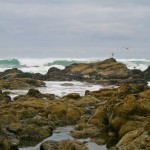






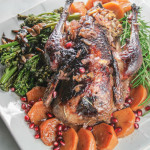

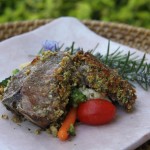


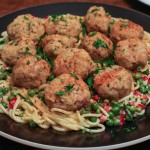
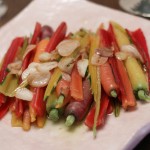
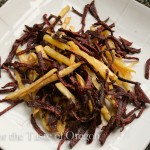

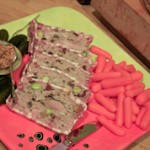
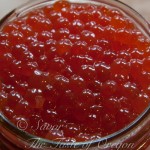
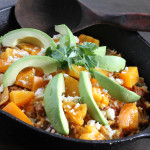
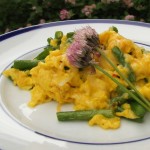
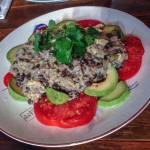
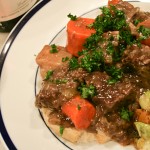
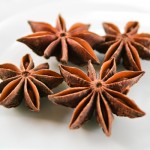
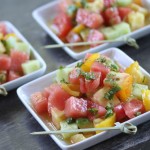


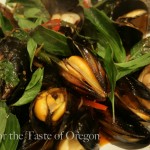
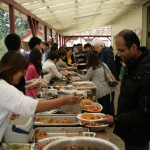
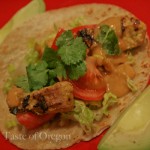
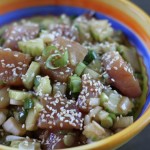
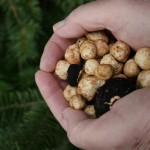
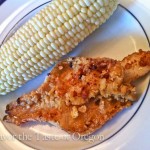

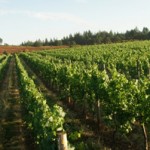
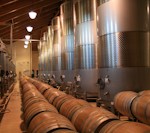
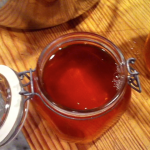

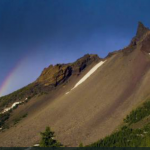



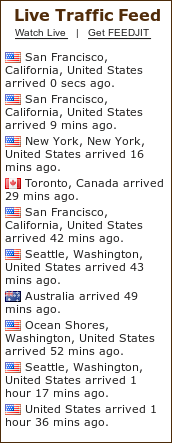





I love to forage. Mushrooms in the spring, berries in the summer and fall. I have herbs growing all over my property. I don’t even need to plant the anymore.
Awesome, Ed! One of the things we’re eager to learn about and go foraging for here is fiddle head ferns. I hear they’re supposed to taste like asparagus.
What a great morning, I would have loved to join that class!